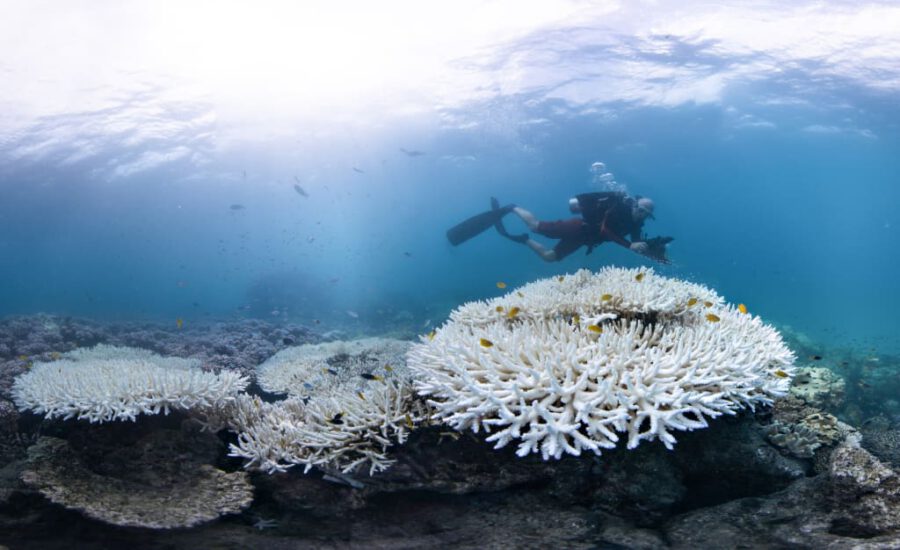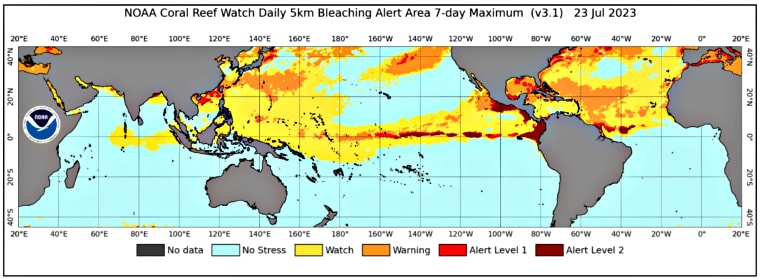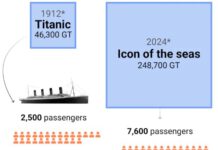Bleaching is reaching severe levels throughout the tropics with more reports coming in daily. This extreme heat stress due to the predicted El Niño, is arriving a month earlier than expected. Corals can recover from mild or short-term bleaching but long-term or extreme heat causes mortality. Restored reefs can be at the same or higher risk of bleaching than unrestored reefs, if they have a lower diversity of coral species or lower diversity of genotypes of the same species. Bleaching poses the single biggest existential threat to coral reefs throughout the world. Years worth of work could disappear in the matter of days or weeks. This document explains (1) what you can do now to minimise damage and (2) how to identify resilient corals for future restoration efforts.
1. What you can do now to minimise damage locally. Local conditions and regulations always take precedence, please check with your local regulator.
If the heat wave or bleaching has arrived in your region, CRC suggests the following actions:
Cease restoration activities and pivot to Protect, Rescue, Monitor mode.
-
PROTECT: Reduce stress at in-situ nurseries – for example by moving corals to deeper, cooler water or reducing UV irradiation by moving to shaded locations or installing shade structures. Driving boats to increase water mixing has shown limited results. This heat wave is an opportunity to test these still-experimental methods.
-
RESCUE: Especially important in areas of or species with limited genetic diversity:
-
Ensure duplication of stock at more than one location (e.g. a mid-water floating nursery).
-
Move samples of all genetic material to a climate-controlled, land-based facility.
-
-
MONITOR. Seek to learn from this event.
-
Document losses.
-
Follow the Resilient Coral Identification Protocol below.
-
CRC is here to help with the accumulation, analysis and dissemination of this knowledge.
-
If the heat wave hasn’t reached you yet, prepare.
-
Check NOAA’s Coral Reef Watch to see how much time you have.
-
Speak with local authorities in advance if you require permission to move corals during extreme hot water events.
-
Develop a monitoring plan. See Resilient Coral Identification Protocol below. Or, for the gold standard, see the CRC’s Coral Reef Restoration Monitoring Guide – especially Restored Reef Areal Dimension (page 25) and colony fate tracking (page 34).

-
2. Resilient Coral Identification Protocol. The following are CRC’s recommendations on how to identify resilient corals for future restoration. The more you can do the better.
Basic
-
If possible, install temperature loggers (e.g. this one).
-
Select bleached and unbleached corals to tag. We recommend a minimum two tagged corals of each key taxon per one square meter on a given reef of interest.
-
Photograph tagged corals, preferably with a bleaching color chart in the frame of the photo. If you do not have an underwater camera, record percent of colony bleached (1-25%, 25-50% 50-75%, 75-100%); disease type and presence, % mortality (see above).
-
Photograph or record information daily if possible and bleaching is severe. Monitor twice a week if bleaching is mild or predicted within a month.
-
Keep records of the tag #, GPS location, species, and condition of the tagged coral.
More advanced:
-
Take samples of bleached and non bleached colonies within and between species and preserve in 95% non-denatured ethanol, making sure that the final concentration of ethanol in the sample tube is >70%. Sample tubes need to be tightly sealed and stored as cold as possible to prevent evaporation. See this protocol for more detailed instructions (works for most coral species, dx.doi.org/10.17504/protocols.io.bec8jazw). Alternative preservation methods include liquid nitrogen, RNALater, and RNA/DNA Shield. Score bleaching level using the coral health chart visually and photograph.
-
Monitor for coral spawning and/or delayed onset of reproduction. If possible, use cryopreservation to preserve sperm. See protocols here. You must have liquid nitrogen on hand before you begin. The recommended amount to collect is 5 ml of egg-sperm bundles over 5 mls of seawater for a total of 10ml in a 50ml tube. This can help preserve genetic diversity for future generations even if that coral genotype dies out in the wild.
We are a community, we will get through this El Nino and likely mass bleaching together as we have in the past, by exchanging stories, helping each other, and improving the way we do restoration. In this moment, we need to protect what we can, identify resilient corals, and experiment with techniques to help us in the future. For the future, we need to accelerate efforts to prevent corals from bleaching and be better prepared for bleaching events when they occur.
Please reach out with questions, requests, and reports from the field here.
Source: Coral Restoration Consortium (CRC)International Coral Reef Initiative (ICRI)
icriforum.org -














